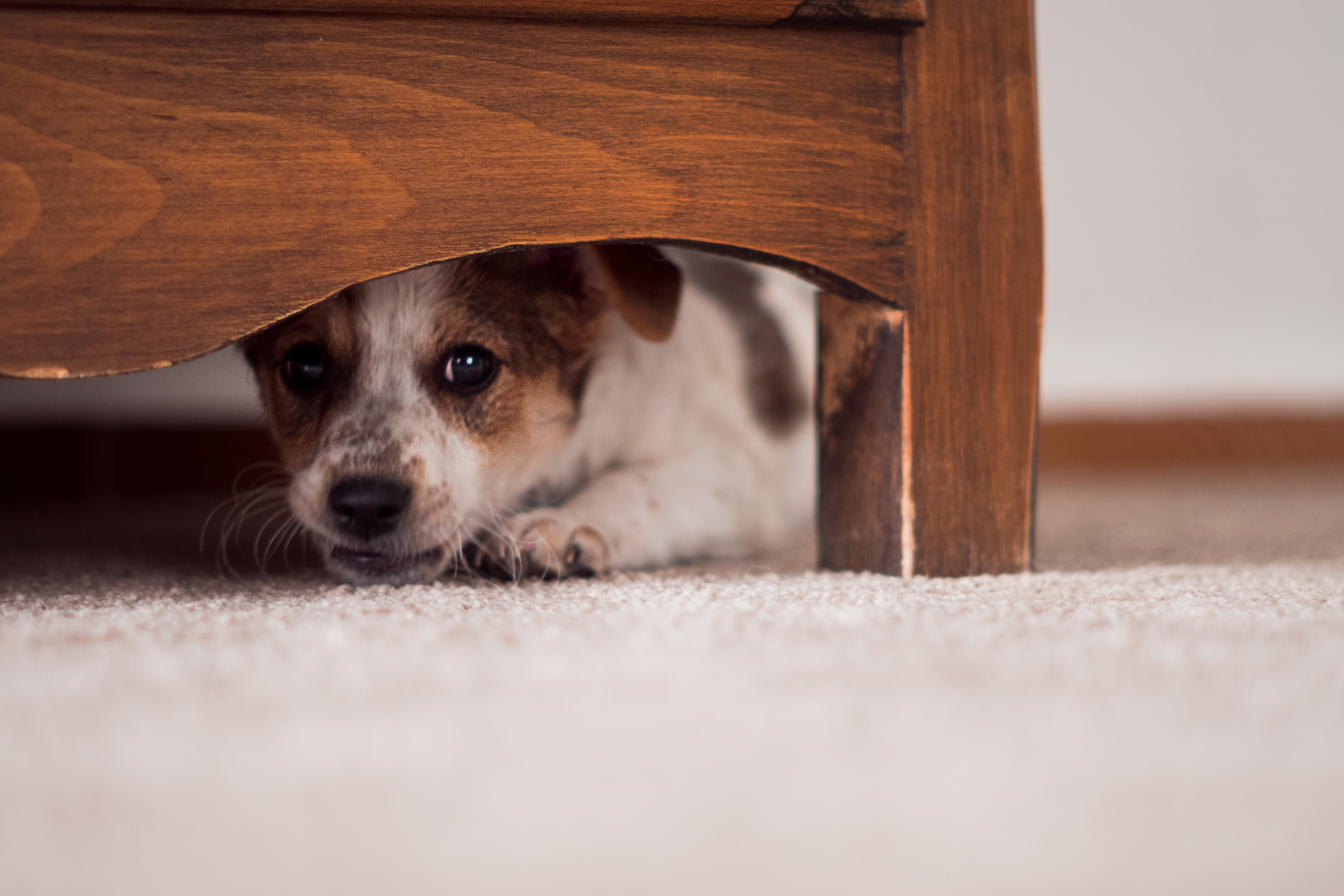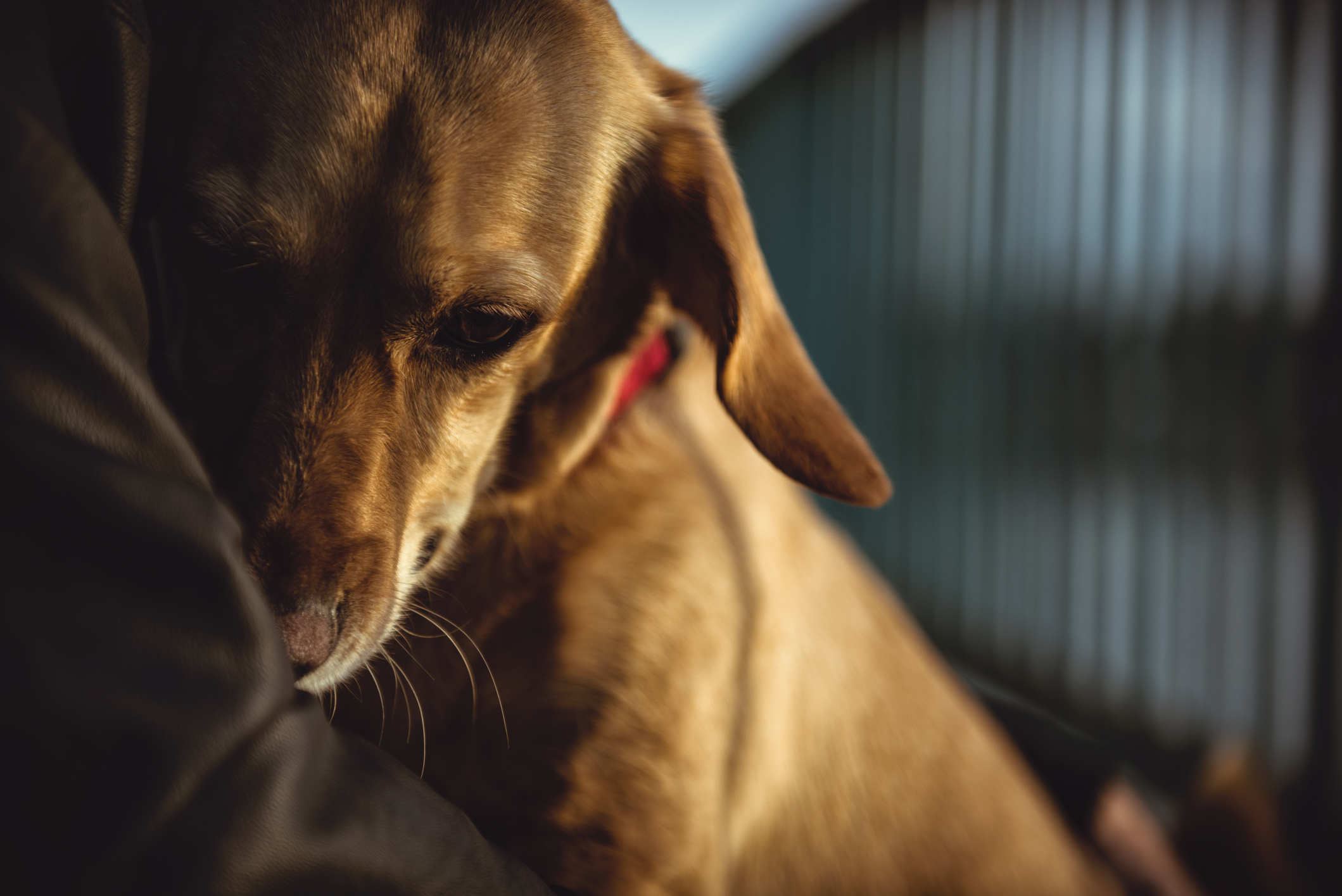
How You Can Help Your Pup Heal from PTSD
Post-traumatic stress disorder (PTSD) is a mental health condition that’s often discussed in humans, but many people don’t realize that pets can suffer from it, too. Dogs can develop PTSD after a traumatizing event or lifestyle, whether under your care or at a previous home. The condition can cause several problematic behaviors and force your furry friend to lead a life of fear and stress.
The good news is that you can help. The road to recovery isn’t easy, and it takes lots of practice. It’s hard to see your dog suffer when they’ve given you nothing but unconditional love. But there are several tried-and-true methods you can use to help your furry companion heal their past and lead a happier life.
Symptoms of PTSD in pups
You might have adopted a dog that already has PTSD. Upon adoption, you learned their story. They might have been rescued from an abusive owner or were formerly a military dog. If you know right away that your new friend has this problem, you can begin treating it.
However, PTSD can develop after you’ve adopted a dog into your family, as well. So, how can you tell if your pup has PTSD? Since dogs don’t speak, pet owners have to learn their language.Something’s up if they’re showing any of these symptoms:
- Changes in temperament
- Increased irritability
- Fear and aggression
- Hypervigilance
- Fear urination
- Trembling
- Avoidance of touch
 Keep in mind that seemingly mundane activities can be traumatic for some dogs. They determine what’s traumatic, not you. This could be anything from fireworks to having a bath. Watch your dog’s behavior, especially when they experience something for the first time, to ensure they are acting normally and did not endure excessive stress.
Keep in mind that seemingly mundane activities can be traumatic for some dogs. They determine what’s traumatic, not you. This could be anything from fireworks to having a bath. Watch your dog’s behavior, especially when they experience something for the first time, to ensure they are acting normally and did not endure excessive stress.
How to rebuild your dog’s trust and confidence
If you notice your dog is exhibiting signs of stress and PTSD, you’ll want to visit a vet to ensure they aren’t suffering a physical health problem and get a diagnosis. Once PTSD has been identified, there are ways you can help your pet recover at home.
- Create a routine: After a traumatic experience, one of the best things you can do for your dog is give them a sense of normalcy. When their life is unpredictable, they stay on high alert and can’t move on from their PTSD. If activities occur at the same times every day, your dog will be more at ease. They will find comfort in knowing exactly what happens next. Once a routine is in place, stick to it and keep it consistent.
- Create safe spaces: Routines create a sense of normalcy, and so do safe spaces. Your pup needs a spot just for them to go to when they feel scared. This can be a crate, a dog bed, a blanket or whatever works best. Let your dog choose a space they like because it’s all about what makes them comfortable. Never send them to their safe space as a form of punishment. Only good things are allowed to happen there, otherwise it’s no longer a safe space. The point is to guarantee security and relaxation when they go to their special spot.
- Play therapy: Play time teaches your dog there’s still reason to enjoy life. It gives them a break from environmental factors triggering their anxiety. Playing is an opportunity for your dog to feel nothing but love and joy. Show your furry friend they have your undivided attention! Play therapy isn’t a reward for good behavior. Dogs who struggle with PTSD deserve to play, even if the healing process isn’t going well. Being happy gives them strength to fight depression and improves resiliency when their anxiety is triggered.
- Counterconditioning: Another great way to help your dog overcome PTSD is by practicing desensitization counterconditioning. To do this, you’ll need to find out what event caused the PTSD. Then, gradually introduce your dog to an environment that triggers bad memories of the event. This should be done little by little so your dog can get comfortable with it over time. For instance, perhaps the lawnmower stresses them out. You can start off by having your dog observe the lawnmower from a distance. Next time, turn it on for just a few moments. Let your dog approach a little closer. They will learn that nothing bad happens when they experience something that previously triggered anxiety. Counterconditioning may be best administered by a pet behavior professional.
- Show compassion: Recovering from PTSD takes time and endless amounts of patience. Show your dog that you will never give up on them. A triggering event might give you a tad bit of anxiety knowing how it will affect your dog. Keep that anxiety under wraps so your dog can learn there’s nothing to be afraid of. Be a good role model by controlling your emotions. People can sense another person’s distress, and so can dogs. If you’re happy, chances are your dog will become happy, too!

Remember that your dog may experience symptoms of PTSD for the rest of their life. However, through careful handling and persistence, you can help them maintain stability and cope with their condition. Keep your spirits up. Setbacks are a normal part of the healing process. If you persevere, so will your little companion. With these recovery techniques, your pup can attain the happy life they deserve.


